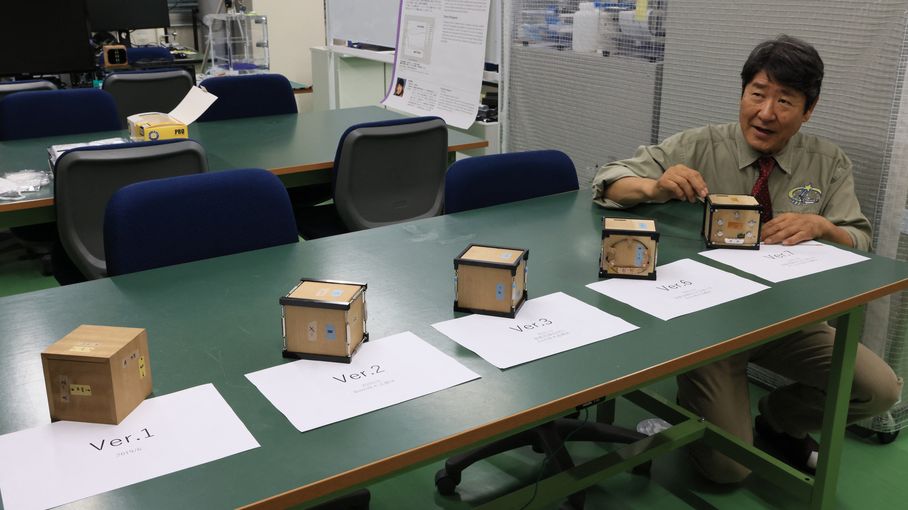Japan Launches World’s First Wooden Satellite in September
A groundbreaking achievement in space technology, Japanese researchers have announced the upcoming launch of the world’s first wooden satellite aboard a SpaceX rocket in September. The experimental cubic satellite, measuring 10 cm on each side, was developed by scientists from the University of Kyoto and the forestry company Sumitomo Forestry.
The wooden satellite, named LignoSat, is expected to completely burn upon re-entry into the Earth’s atmosphere, eliminating the risk of metal particles forming when satellites made of other materials return to Earth. Astronaut and special professor at the University of Kyoto, Takao Doi, emphasized the importance of non-metal satellites in space technology.
Following its delivery to the Japanese space agency JAXA next week, LignoSat will be sent to the International Space Station (ISS) where it will be released from the Japanese experimental module to undergo tests on its resilience and durability in space. Data collected from the satellite will be transmitted to researchers to analyze its performance under extreme conditions.
In a separate mission on Tuesday, a rocket carrying another satellite developed through a collaboration between the European Space Agency and JAXA was launched from California. The EarthCARE satellite aims to study the role of clouds in combating climate change as it orbits the Earth at an altitude of nearly 400 km for three years.
Wooden Satellite Technology and Sustainability
The development and launch of the wooden satellite mark a significant advancement in the field of satellite technology, with a focus on sustainability and environmental impact. By using wood, a biodegradable and renewable material, researchers aim to reduce the environmental footprint of space missions and prevent space debris from accumulating in orbit.
Wooden satellites offer a promising solution to the issue of space debris, as they can be designed to safely disintegrate upon re-entry, minimizing the risk of collisions with other objects in space. Additionally, the use of wood in satellite construction opens up new possibilities for sustainable space exploration and scientific research.
Future Prospects for Wooden Satellites in Space Exploration
As the first wooden satellite prepares for launch, scientists and engineers are already looking ahead to the potential applications of this innovative technology in future space missions. The success of the LignoSat project could pave the way for the development of more wooden satellites for various scientific, commercial, and exploratory purposes.
The data collected from the wooden satellite during its mission on the ISS will provide valuable insights into the performance of wood-based materials in space environments, informing future design and construction processes. With continued research and development, wooden satellites could become a staple in the next generation of space exploration, combining sustainability with cutting-edge technology.
In conclusion, the launch of the world’s first wooden satellite represents a significant milestone in space innovation, highlighting the potential for sustainable and environmentally friendly solutions in space exploration. By pushing the boundaries of traditional satellite materials, researchers are opening up new possibilities for a more sustainable future in space technology.




